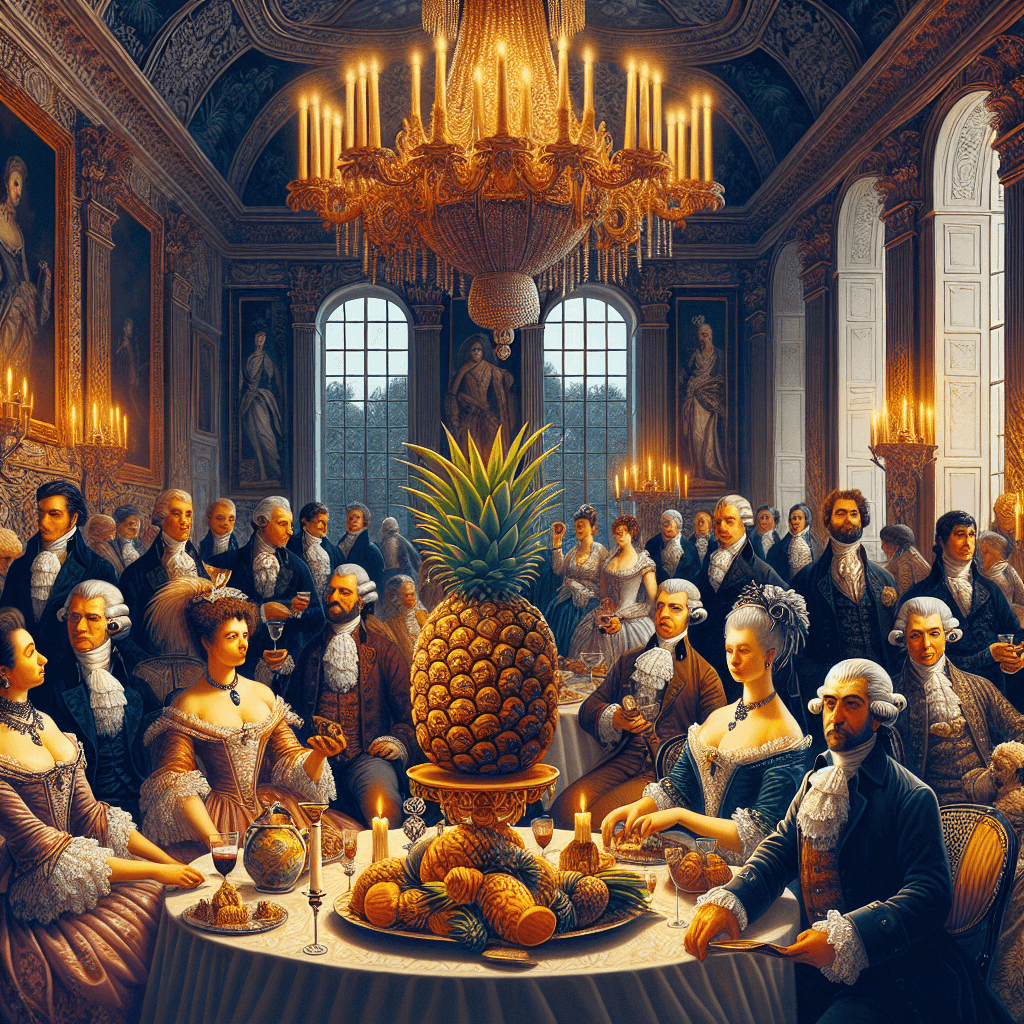The Pineapple: How a Fruit Became the Ultimate Status Symbol
In the 18th century, the pineapple was so rare and expensive that the elite would rent them just for an evening to display at parties. Discover the strange history of the fruit that was once the ultimate sign of wealth.


Too Long; Didn't Read
Pineapples were once incredibly rare and expensive in Europe, making them a powerful status symbol. The wealthy would even rent them just to display at parties to show off their social standing.
The Ultimate Status Symbol: Why Could You Once Rent Pineapples Just to Display Them at Parties?
Imagine hosting a lavish party, aiming to impress your guests with your wealth and sophistication. Forget champagne fountains or elaborate ice sculptures; for a time, the ultimate centrepiece, the undeniable sign of elite status, was a fruit. Not just any fruit, but a pineapple. Even more surprisingly, many hosts didn't even own this prized possession – they rented it just for the evening! Why did this tropical fruit command such reverence, and how did pineapple rentals become a legitimate business? This post delves into the fascinating history behind the pineapple's reign as the king of fruits and status symbols.
The 'King of Fruits' Arrives in Europe
When European explorers, including Christopher Columbus on his second voyage in 1493, first encountered the pineapple in the Americas (specifically Guadeloupe), they were astounded. Its tough, scaly exterior gave way to incredibly sweet, vibrant flesh, unlike anything commonly available back home. Its unique crown-like top even led to it being dubbed the 'King of Fruits'.
However, bringing this exotic wonder back to Europe was a monumental challenge. Pineapples spoiled quickly on the long, arduous sea voyages. This inherent difficulty in transportation immediately established the pineapple as:
- Incredibly Rare: Only a few fruits might survive the journey, making them scarce commodities.
- Exorbitantly Expensive: The cost of transport, coupled with the high spoilage rate, meant surviving pineapples fetched astronomical prices.
This initial rarity laid the groundwork for the pineapple's ascent to luxury status.
The Herculean Task of Cultivation
The obvious solution to the transport problem was to grow pineapples in Europe. However, this presented its own formidable obstacles. Pineapples thrive in tropical climates, utterly unlike the cooler European weather. Enterprising gardeners and botanists in the 17th and 18th centuries realised the only way was to cultivate them artificially.
Pineries: The Million-Dollar Greenhouses
- Specialized Structures: Complex glasshouses, known as 'pineries', were developed. These required sophisticated heating systems (often involving furnaces and manure pits generating heat through decomposition) and constant, skilled attention to mimic tropical conditions.
- Immense Cost: Building and maintaining a pinery was ruinously expensive, requiring significant investment in materials, fuel, and expert horticulturalists. Growing a single pineapple could take years and cost the equivalent of thousands of dollars in today's money. Prominent figures like Agnes Block in the Netherlands and later, wealthy landowners in Britain, pioneered these efforts.
Growing your own pineapple was therefore an even greater display of wealth than simply importing one. It demonstrated not just riches, but also mastery over nature and access to cutting-edge technology and expertise.
Pineapple Power: The Ultimate Status Symbol
Given the extreme difficulty and cost associated with obtaining a pineapple, either through import or cultivation, it inevitably became a powerful symbol of status, wealth, and prestige in the 17th and 18th centuries.
- Signalling Elite Standing: Simply possessing a pineapple indicated you were part of the highest echelons of society. Royalty and the aristocracy embraced it. King Charles II of England was famously depicted in a 1675 painting receiving the first pineapple grown on English soil.
- The Pinnacle of Hospitality: For a host, displaying a pineapple at a dinner party or gathering was the ultimate expression of welcome and esteem for their guests. It demonstrated that no expense was spared. The fruit often served purely as a decorative centrepiece, admired but rarely eaten due to its value. Pineapple motifs even began appearing in architecture, décor, and gatepost finials as symbols of welcome and prosperity.
Rent-a-Pineapple: Status on a Budget (Sort Of)
The intense social pressure to display this symbol of affluence created a dilemma for the aspiring gentry or those wealthy, but not pineapple-growing wealthy. They desired the status conveyed by the fruit but couldn't justify the astronomical purchase price, let alone the cost of cultivation.
This gap in the market led to the emergence of pineapple rentals.
- The Business Model: Confectioners, specialist grocers, or caterers who could afford to acquire pineapples began renting them out by the evening.
- How it Worked: A host could hire a pineapple to be the star attraction on their table. Guests would marvel at the host's apparent wealth and sophistication. The next day, the intact pineapple would be returned to the proprietor, ready to be rented out again or eventually sold to someone affluent enough to actually consume it.
- Still Expensive: Renting was significantly cheaper than buying, but it was still a considerable expense, accessible only to the reasonably well-off seeking to project an image of greater wealth.
This practice allowed the pineapple's symbolism to permeate further down the social ladder, albeit temporarily, solidifying its image as the must-have item for any fashionable event.
Conclusion: From Rented Royalty to Pantry Staple
The era of pineapple rentals offers a fascinating glimpse into the social history of status symbols and the economics of luxury goods. The journey of the pineapple—from rare exotic import to prohibitively expensive cultivated crop, and finally to rentable status symbol—highlights how scarcity, cost, and novelty can elevate an ordinary object (or fruit!) to extraordinary heights.
Today, thanks to advancements in global transport and cultivation, pineapples are affordable and readily available worldwide. Their past life as rented icons of the elite seems almost unbelievable. So, the next time you slice into a juicy pineapple, take a moment to appreciate its journey from unattainable symbol of royal favour to the accessible, delicious fruit we enjoy today.


